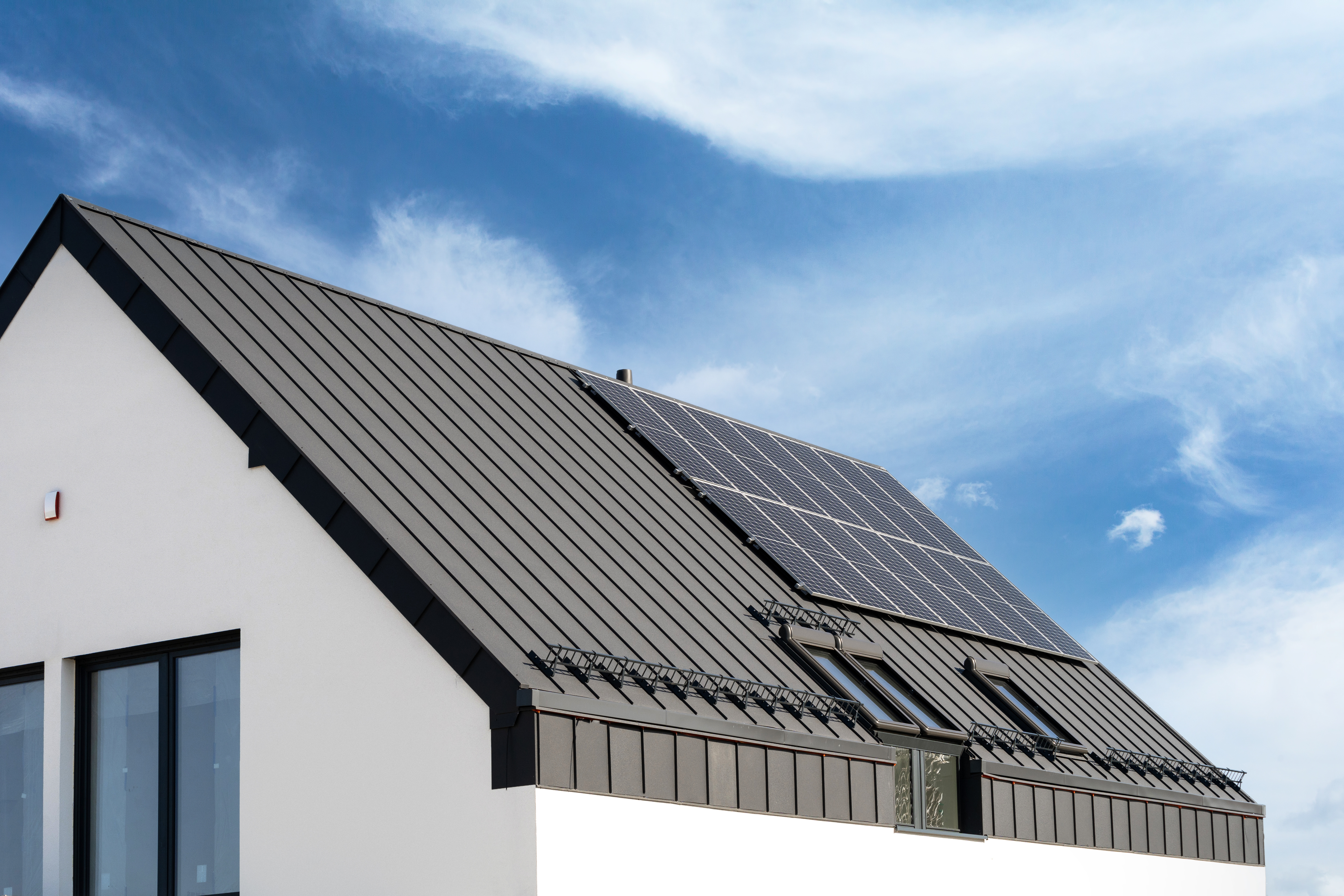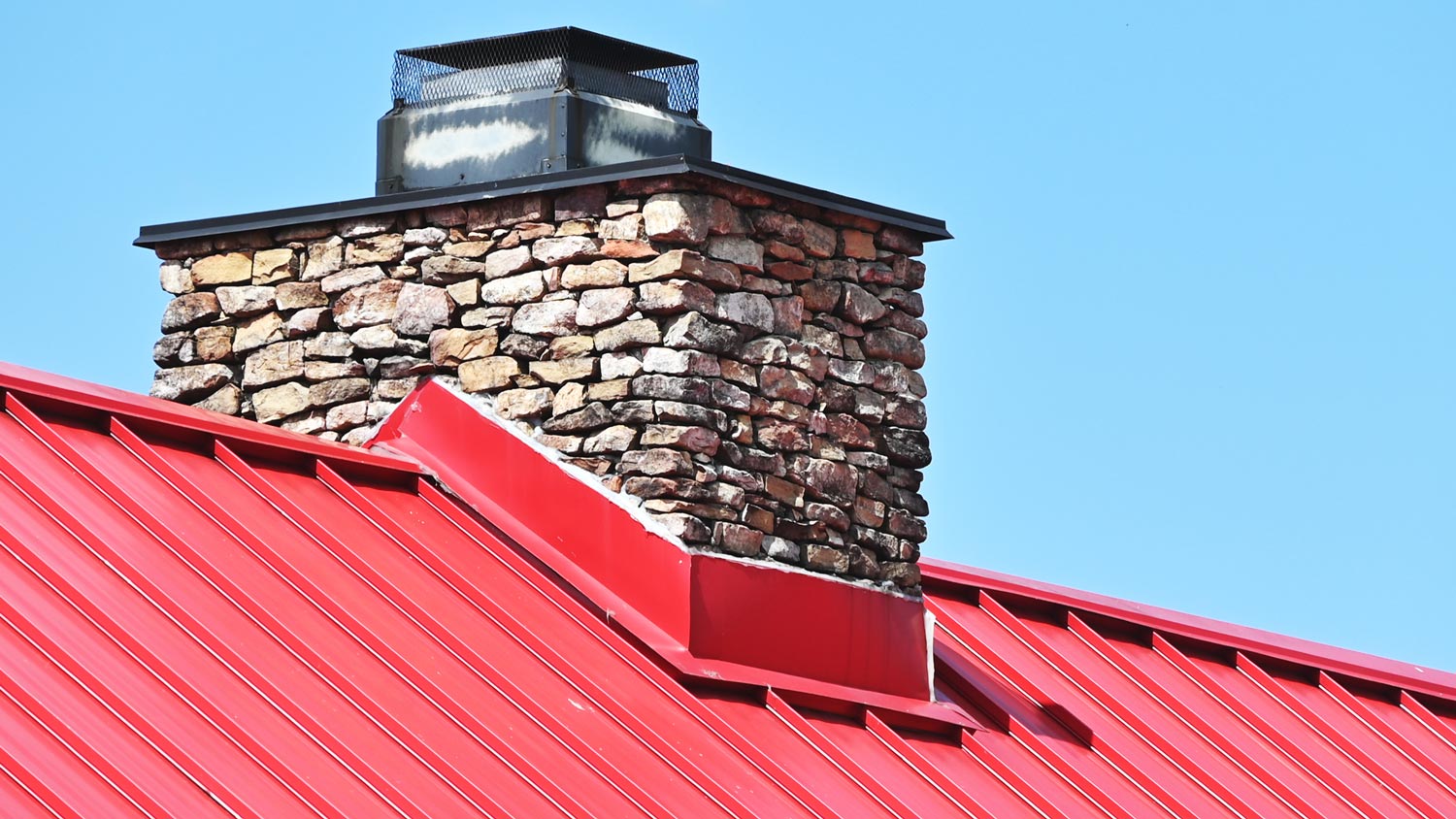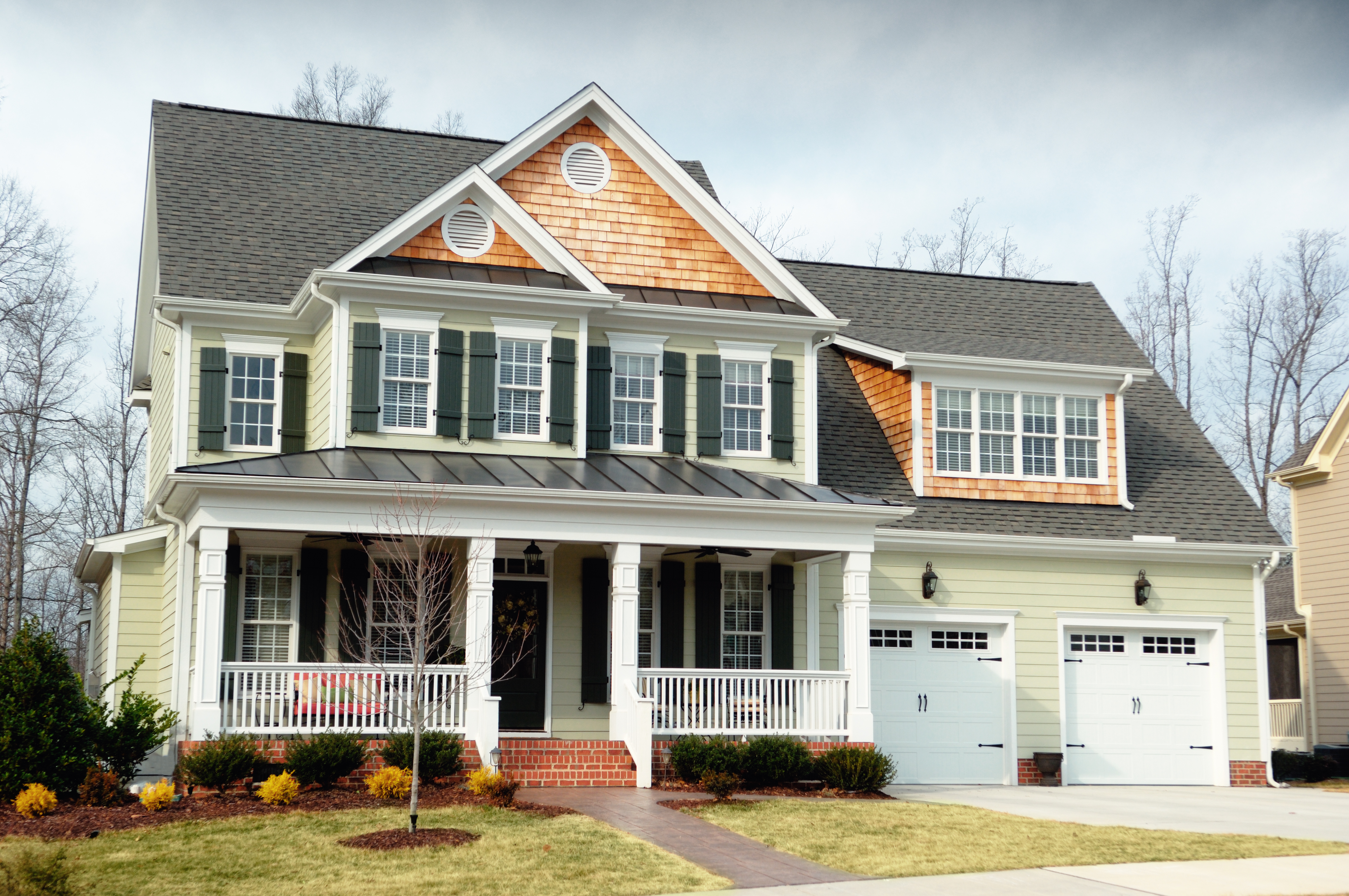
A metal roof can defend your home against Ohio’s varying weather conditions. Learn how much a metal roof costs in Columbus, OH.
Only tackle this leak-proofing project if you have the right skills and safety measures in place


Seeing a water stain developing on your ceiling can cause your stomach to drop. However, this classic warning sign of a leaky roof doesn’t usually mean you’ll have to fork out for a full roof replacement. Sometimes it can be something as simple as faulty flashing around your chimney. Flashing is the sheet metal installed around the base of your chimney to keep things watertight.
This guide walks you through how to replace flashing on chimneys to help you decide if you have the skill set to take on this project or if it’s something you need to get the professionals onto pronto.

Replacing chimney flashing involves accessing the roof, taking measurements, removing the old flashing, and installing the new flashing with roofing nails and caulk. Having to work at heights with a complex set of sheet metal sections means learning how to replace flashing on a chimney can be tricky. After reading through the steps below, if you have safety or technical concerns, it’s best to call a chimney contractor.
The most important aspect of replacing flashing on a chimney is accessing the roof safely. Roofs are sloping, slippery, and high. If you take a tumble, you could seriously injure yourself (or worse), and treading on the wrong roof part in the wrong way can also lead to costly roof damage repair bills.
If you want to DIY chimney flashing replacement, working on a flat roof is less risky. Only get the tools out on a dry, calm day, and enlist a helper to provide ladder and supervisory support. Always follow ladder safety guidelines and wear rubber-soled shoes and a safety harness with a rope attached to the chimney for extra security. Position the ladder on a flat, stable surface, extend it a few feet beyond the roof surface, and keep three points of contact on the ladder as you climb.
Once you’re safely up on the roof, inspect the flashing for holes, corrosion, or loose sections. You don’t want to buy supplies until you’ve confirmed this is the roof repair in the cards. Sometimes, if you’re lucky, you might only need to reseal the flashing with caulk or roofing cement rather than completely replacing the damaged sheets.
The replacement flashing sections need to be the correct size to avoid a DIY disaster. What you need depends on your roof's slope and the chimney size and construction. Accurately measuring the existing flashing heights and dimensions is a big help.
It is usually easiest to take the chimney and roof slope measurements to your local sheet metal supplier. They can help you purchase the correct size and conveniently cut and bend the pieces to shape, allowing for appropriate flashing overlap.
To calculate the slope of your roof, measure the rise (the vertical distance from the roof base to the highest point) and the run (the horizontal distance from the outer edge of the roof to the point below the highest section of the roof). Divide the rise by the run to get the slope ratio.
Scrape away the old sealant and flashing using a hammer and chisel or pry bar.
Work cautiously—you don’t want extra chimney repair costs resulting from a wayward chisel—and wear protective gloves when handling the old sharp sheets. It can help to mark and keep the pieces to remind you where and how the new flashing sections should fit.
The sections of flashing your chimney requires vary depending on its construction. All sections should sit flush against the surfaces, be held securely in place with roofing nails, and then get sealed along the mortar joints with flashing caulk.
The best caulk for chimney flashing is high-temperature silicone or roofing cement. Use copper nails for copper flashing and galvanized steel nails for the same flashing material. The sections sitting flat against the roof are typically covered with shingles for aesthetic reasons.
If the flashing is too long, you can shape and cut it to size using tin snips. It should be wide enough to extend across the roof base to overlap the roofing shingles.
Depending on the construction of your chimney and roof, the flashing sections you may have to replace include:
Apron flashing: This base flashing sits at the front side of the chimney where the vertical wall joins the roof surface and the rest of the base flashing.
Step flashing: This L-shaped base flashing sits where the roof intersects with a vertical sidewall of the chimney. Once complete, these individual small step sections correspond with each line of shingles and sit underneath the shingles.
Cricket flashing: When a chimney is over 30 inches wide, it often includes a water-diverting layer of protection where the roof meets the chimney.
Backer or saddle flashing: Used for chimneys less than 30 inches wide, this extends a minimum of 6 inches up the chimney wall. You typically install this on the upslope of the roof, where it connects with the backside of the chimney stack.
Counter or cap flashing: This covers the top edges of all the step flashing you install to provide an extra layer of protection from water intrusion. The nails must be long enough to penetrate a minimum of 1 inch.
Learning how to replace flashing on chimneys is a technical task involving working up high on a sloping roof. It requires accurate measurements, the use of the correct flashing sections, and careful fitting. A mistake could result in costly roof repairs, water damage bills, or serious injury. While it’s a doable DIY project, unless you have experience working on roofs, it’s probably best to let a local roofing repair company handle things.
From average costs to expert advice, get all the answers you need to get your job done.

A metal roof can defend your home against Ohio’s varying weather conditions. Learn how much a metal roof costs in Columbus, OH.

Dealing with a visibly damaged roof or leak? Learn about roof repair costs in Columbus to see how much you’ll need to budget for a permanent solution.

Learn about roof replacement costs in Columbus and what factors are at play to budget accurately and make sure you’re getting a fair price.

A roof leak can cause serious damage to your home. Learn what signs of a roof leak to look for and when to call a professional.

Is your roof leaking in winter? Learn about 10 causes of some winter roof leaks to help determine why melting snow is leaking into the house and what to do about it.

Even if you were meticulous when painting your house, it's possible that paint got onto your roof. Read this guide to learn how to get paint off shingles.